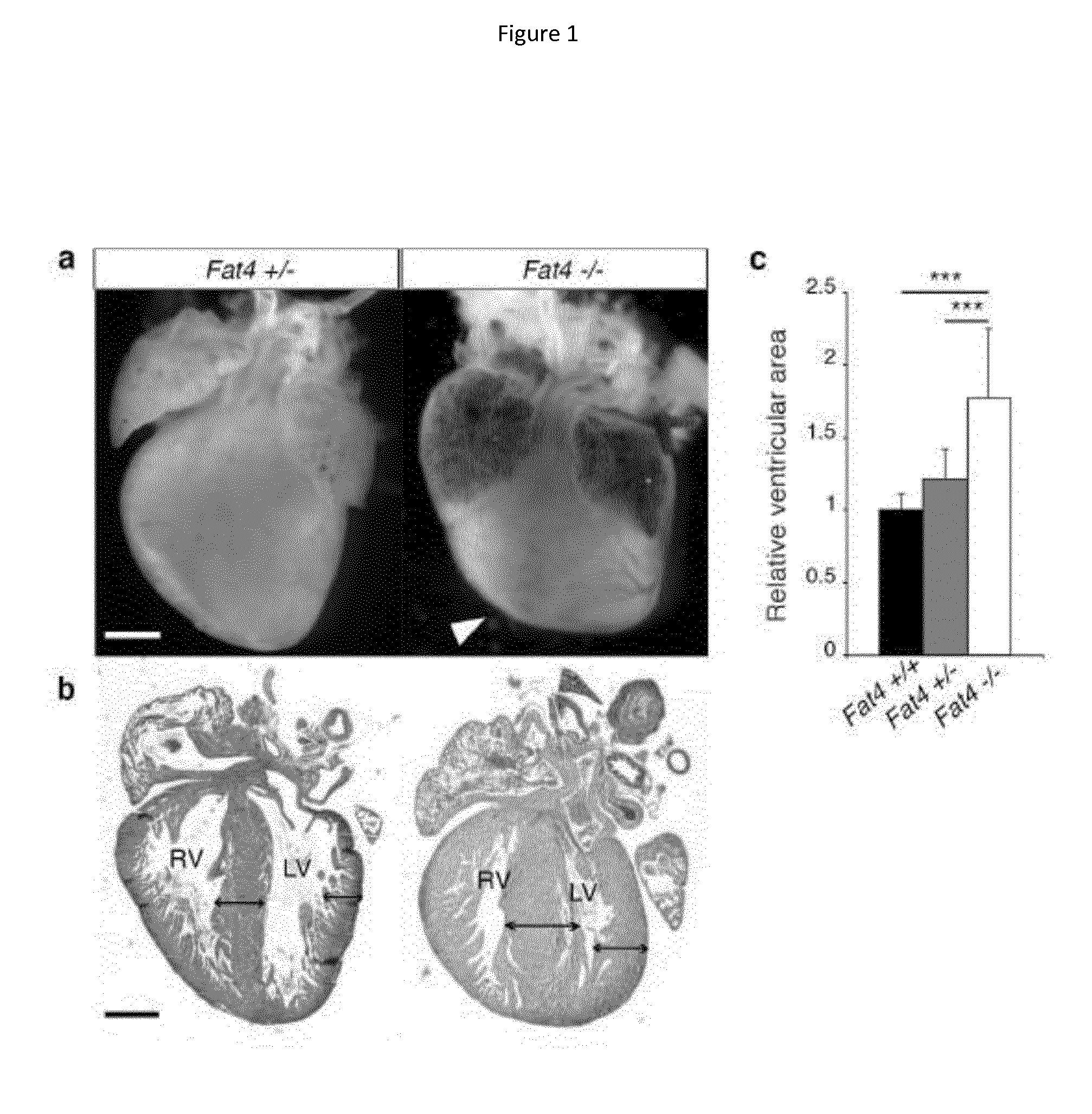Treatment of cardiac diseases with modulators of the hippo pathway
a technology of hippo pathway and cardiac disease, applied in the field of treatment of cardiac diseases with hippo pathway modulators, can solve the problems of increased cardiac morbidity and mortality, increased risk of cardiac events, and increased risk of cardiac hypertrophy
- Summary
- Abstract
- Description
- Claims
- Application Information
AI Technical Summary
Benefits of technology
Problems solved by technology
Method used
Image
Examples
examples
[0198]1. Material and Methods
[0199]1.1. Animal Models
[0200]The Fat4 mouse mutant line8 was maintained in a 129S1 genetic background. Fat4 conditional mutants8 were crossed to Mesp1Cre / + 30, Wt1Cre / + 31 lines or Yap conditional mutants32 and backcrossed in the 129S1 genetic background. Fat4− / − mutants die at birth, whereas Fat4flox / −; Mesp1Cre / + survive. Animal procedures were approved by the ethical committee of the Institut Pasteur and the French Ministry of Research. For histological analysis, hearts were excised, incubated in cold 250 mM KCl, fixed in 4% paraformaldehyde, embedded in paraffin in an automated vacuum tissue processor and sectioned on a microtome (10 μm). For immunofluorescence studies, hearts were fixed in 0.5% paraformaldehyde, embedded in gelatine / sucrose, frozen in cold isopentane and sectioned on a cryostat (10 μm). For the quantification of tissue growth, paraffin sections stained with Hematoxylin Eosin were imaged on a stereomicroscope. A polygonal mask was d...
PUM
| Property | Measurement | Unit |
|---|---|---|
| mass index | aaaaa | aaaaa |
| pH | aaaaa | aaaaa |
| pH | aaaaa | aaaaa |
Abstract
Description
Claims
Application Information
 Login to View More
Login to View More - R&D Engineer
- R&D Manager
- IP Professional
- Industry Leading Data Capabilities
- Powerful AI technology
- Patent DNA Extraction
Browse by: Latest US Patents, China's latest patents, Technical Efficacy Thesaurus, Application Domain, Technology Topic, Popular Technical Reports.
© 2024 PatSnap. All rights reserved.Legal|Privacy policy|Modern Slavery Act Transparency Statement|Sitemap|About US| Contact US: help@patsnap.com










